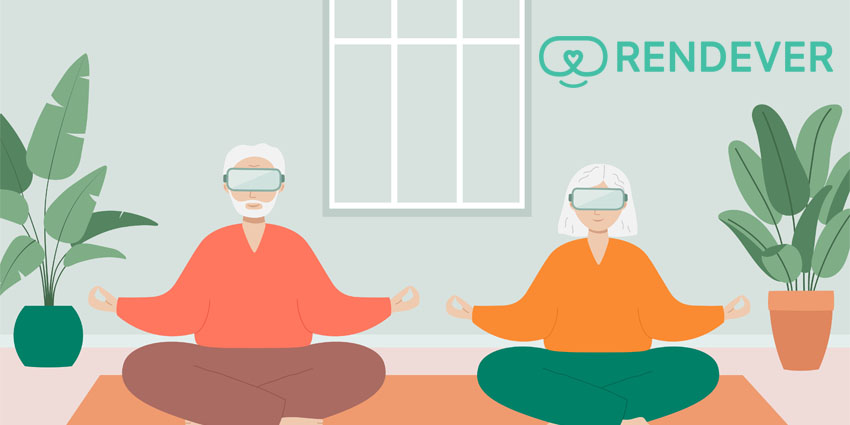According to a new study, more than half of the largest U.S. elder care providers now use VR.
The report “Evolution of VR in Senior Care,” conducted by immersive healthcare solutions provider Rendever, provides compelling numbers that illustrate the widespread use of VR in the elderly care industry and its impact on aging.
The research highlights how VR technology is being used to improve cognitive, emotional and physical health, its impact on various industry stakeholders, and the latest advances to be expected in elderly care.
Rendever CEO and co-founder Kyle Rand commented:
We’re seeing the use of VR in aged care skyrocket, and that makes perfect sense. Most of today’s 65-year-olds have lived through multiple phases of technological advancement – this demographic is anything but technophobic. Technology that improves their ageing is a necessity, and the introduction of VR shows what’s possible.”
In addition to the notable finding that over 50 percent of the largest U.S. elder care providers are using VR, the study also found that 1,950 days have been spent conducting VR sessions in elder care facilities through Rendever over the past eight years. Rendever explains that about 43 percent of these occurred within the past 12 months. Overall, Rendever sessions are up more than 70 percent year over year.
Rendever’s research also found that assisted living is the most popular environment for using VR (26.6 percent), followed by dementia care (22.6 percent) and long-term care (11.6 percent).
One of the most striking research papers revolved around one of Rendever’s flagship products, RendeverFit, which combines “physical activity with cognitive stimulation and social engagement.”
Older individuals who used RendeverFit twice weekly for four weeks showed significant improvements in their physical and social health. Participants (ages 65-99, average 76.3 years) showed signs of improved mobility, a 44 percent reduction in pain complaints, a 48 percent reduction in fear of falling, a 33 percent reduction in feelings of loneliness, and a 36 percent improvement in trust ratings toward members of their senior living community.
“VR is still new to many, but it is one of the technologies that older people have embraced with impressive enthusiasm and thoughtfulness,” Rand wrote in the conclusion of the report, “Evolution of VR in Senior Care.” “With benefits ranging from cognitive stimulation to social engagement to therapeutic interventions, it’s no wonder that the enthusiasm for VR in geriatric care is palpable.”
Lenovo provides ThinkReality VRX headsets to elderly patients
Last month, Lenovo has partnered with Rendever to distribute its VR offering for seniors at the Carolina Caring facility.
The partnership expands distribution of Rendever’s immersive eldercare solution, which provides patients with virtual reality (VR) experiences designed to improve their quality of life. This collaboration builds on a joint initiative between Lenovo and Rendever that combines their XR and digital solutions to create shared experiences, which is particularly beneficial for patients in travel-restricted situations.
Rendever has extensive experience in deploying its patient care solutions across the country, with over 700 deployments to date. The partnership with Lenovo, which began a year ago, is focused on supporting and expanding Rendever’s services. As part of this collaboration, Lenovo is providing Rendever with its ThinkReality VRX headset, a high-quality device that offers a better display and user experience compared to other consumer devices.

